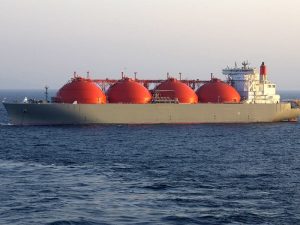Did you know that wave energy has the potential to supply about 11 per cent of Australia’s electricity – the equivalent to powering a city the size of Melbourne – by 2050?
If the results of yesterday’s Climate Institute’s “Climate of the Nation 2012” report are anything to go by, you probably didn’t. Because while that study found overwhelming support among Australians for the development of renewables, most of this was directed towards solar, wind and hydro, with only 25 per cent of respondents nominating wave energy as their most preferred option (although this number still beat out nuclear and coal).
The fact is, not nearly enough is known about ocean renewable energy in Australia – a situation the CSIRO hopes to redress with its new report, “Ocean renewable energy: 2015-2050.” The report, released today – and from which the above fact was gleaned – is the result of the CSIRO’s efforts to understand the potential of this clean energy source, and to inform the ocean energy industry, government and investors about the challenges and potential for the technology.
“Given the potential of ocean energy and the fact that it’s a very new technology, CSIRO wanted to understand what is the sustainable level at which this resource could be used for energy supply and whether it could be competitive with other energy technologies,” said Ian Cresswell, acting director of the CSIRO Wealth from Oceans Flagship. “Assessing the opportunities and challenges from resource to the market is a first for ocean renewable energy in Australia.”
The study was carried out by the Wealth from Oceans and Energy Transformed Flagships and included an analysis of the resource, cost to market, technologies and future take-up projections by oceanographers, engineers, economists. It also engaged the ocean energy industry and related sectors.
As the report – which can now be viewed online – points out, wave energy converters are still an emerging technology. CSIRO’s research uncovered at least 200 devices around the world in various stages of testing and demonstration, but found that relatively few had publicly available data on deployments at sea in full operational mode.
In Australia, development activity was found to be “fragmented” and “relying mainly on entrepreneurs and the formation of small companies to raise funding through public offerings and government grants” – a state of affairs the report identified as not necessarily conducive to Australian innovation.
Nonetheless, the study identified 16 Australian companies that are either actively developing ORE projects, have received significant government and/or private funding, or have announced ORE plans; and it pointed to some home-grown technologies being offered to the market – the most advanced being the CETO submerged buoy system, and the OceanLinx oscillating water column system.
The largest ORE project in Australia (recipient of a $66 million grant from the federal government) was identified as the construction of a wave farm off the coast of Victoria by Ocean Power Technologies Australasia (OPTA), a company with a US-based parent.
As for Australia’s ocean energy potential, the report found that Australia has an abundant wave energy resource and could produce 24-hour power, either from the tides, currents or waves. The nation’s best resource was found to be concentrated along the southern coastline, as well as a consistent, yet smaller, contribution on the east coast – although the report said characterisation of this resource area required further attention.
The areas the report says could benefit most from wave energy technology include Perth, the southern coastline, and (less-so) the east coast of Australia (see chart below). It also found that tidal technology could supply niche areas such as north east Tasmania and WA’s Kimberley region and ocean thermal energy off the coast of far north Queensland.
And while the study predicted that ocean energy could generate around 11 per cent of Australia’s electricity by 2050, it cautions that there will be many economic, technological, environmental and societal factors that will determine the technologies’ success in our future energy mix.
Meanwhile, more research is required, says the report, to map and quantify the resource, understand device performance and maintenance, and test full-scale prototypes.
The report also recommends further investigation into wider impacts, such as the positive and negative impacts on marine protected areas, Indigenous land (native title and land rights), shipping, tourism, recreation and real estate values, aquaculture and fisheries, mineral exploration and mining, defence and security.








